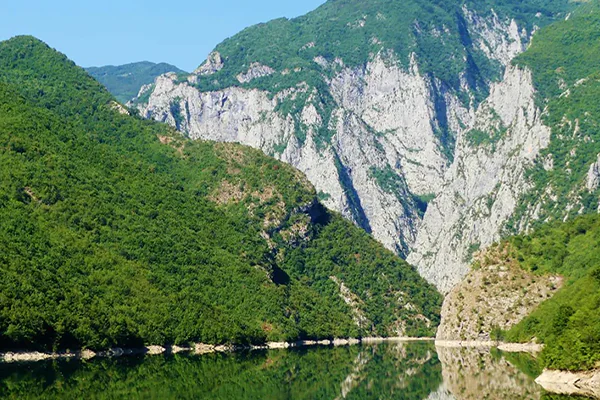Albania, a country located in the Western Balkans, experiences a diverse climate due to its unique geographical features, including its coastline along the Adriatic and Ionian Seas, its inland plains, and its high mountain ranges. The climate in Albania can be broadly classified into three main types: the coastal climate, the continental climate in the inland areas, and the mountainous climate in the higher elevations.
Coastal Climate
Along the coastline, Albania enjoys a Mediterranean climate characterized by hot, dry summers and mild, wet winters. This climate is predominant in cities like Durrës, Vlorë, and Sarandë. Summer temperatures in these areas can often exceed 30°C (86°F), providing perfect conditions for beach tourism from June through August. Winters are mild, with temperatures rarely falling below 0°C (32°F). Rainfall is more common in the cooler months, particularly from October to December.
Inland Climate
Moving inland, the climate shifts to a more continental influence, with greater temperature variations between seasons. Cities such as Tirana, the capital, and Elbasan experience hot summers, with temperatures often reaching the high 20s to low 30s°C (mid-80s to low 90s°F). However, winters are colder than on the coast, with temperatures frequently dropping below freezing, especially at night, and occasional snowfall.
Mountainous Climate
The mountainous regions of Albania, particularly the Albanian Alps in the north and the ranges extending down the country’s spine, experience an alpine climate. This climate is characterized by cool summers and cold, snowy winters. In these areas, temperatures can be significantly lower than in the rest of the country, with heavy snowfall common in winter, making it a suitable destination for winter sports. The weather can be quite variable and unpredictable in these regions, with sudden changes in temperature and conditions not uncommon.
Climatic Variability and Effects
Albania’s climate is influenced by the interaction of various geographical and atmospheric factors. The warm currents of the Mediterranean Sea moderate temperatures along the coast, while the country’s diverse topography, with its mix of mountains and valleys, leads to localized variations in weather patterns. This topographical diversity can cause significant microclimates where weather conditions vary over short distances.
Climate change is increasingly impacting Albania, as it is in other parts of the world. The country has experienced changes in precipitation patterns, with more intense rainfall events and periods of drought becoming more common. These changes have implications for agriculture, water resources, and natural ecosystems. Rising temperatures have also led to more frequent heatwaves, particularly in urban areas, affecting public health and energy consumption.
Albania’s climate is as varied as its landscape, offering a rich tapestry of weather conditions that range from the Mediterranean warmth of its coastal regions to the cool alpine breezes of its high mountains. This diversity not only shapes the country’s natural beauty and biodiversity but also influences its cultural practices, agriculture, and tourism. As climate change continues to evolve, understanding and adapting to these variations becomes increasingly important for the country’s future.


0 Comment